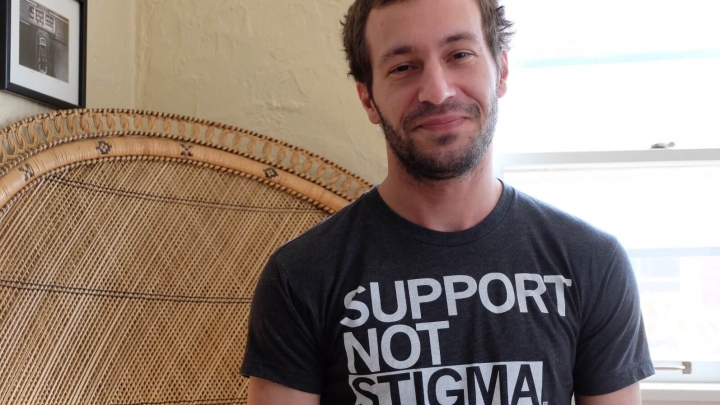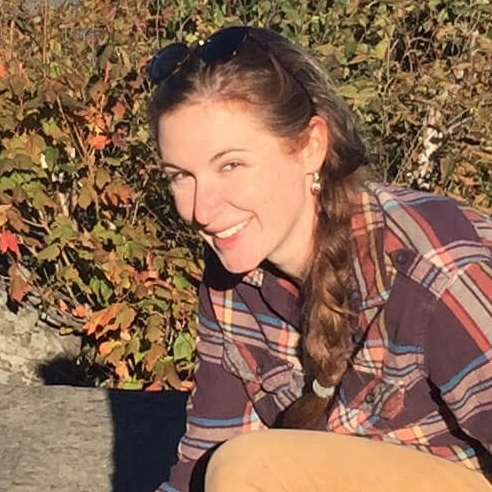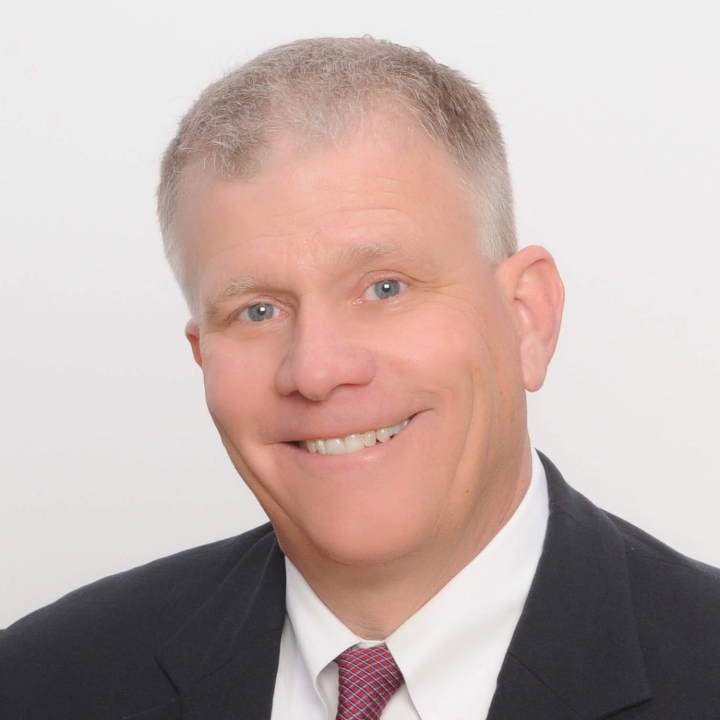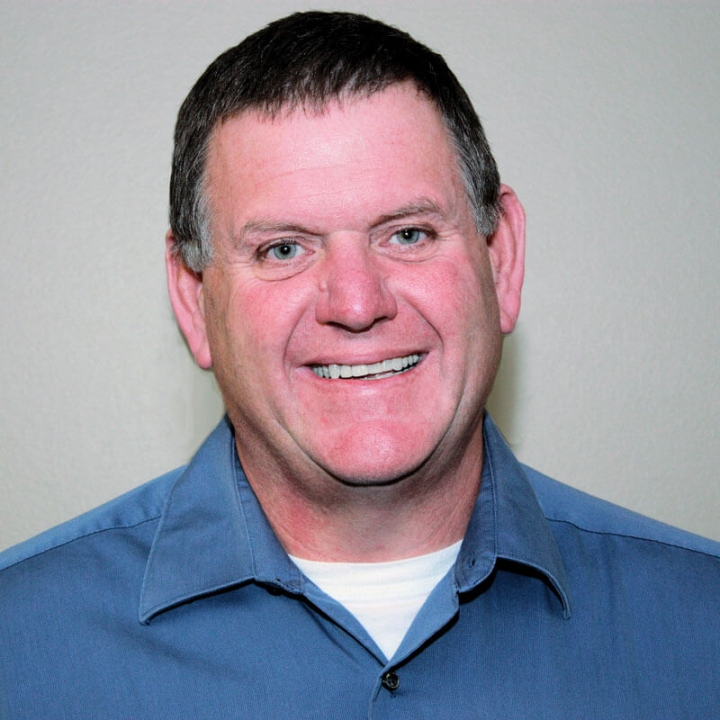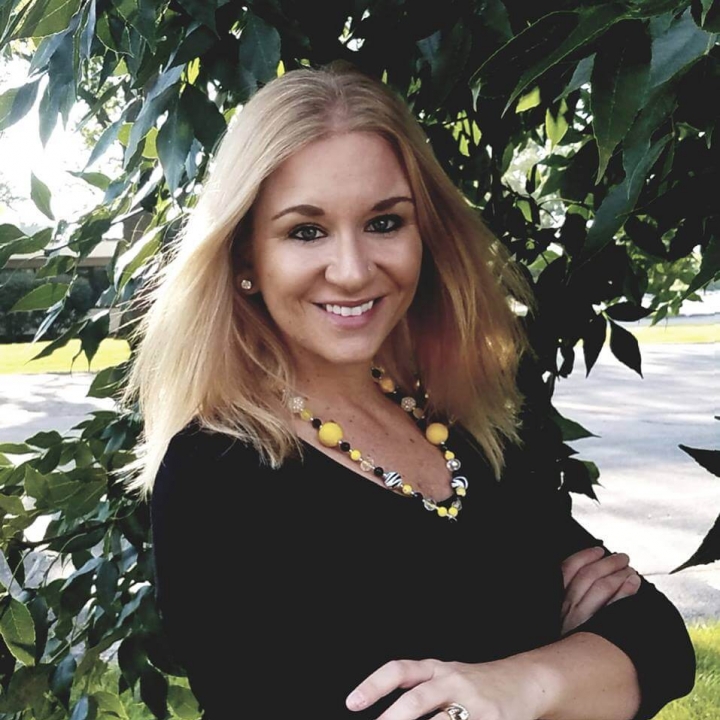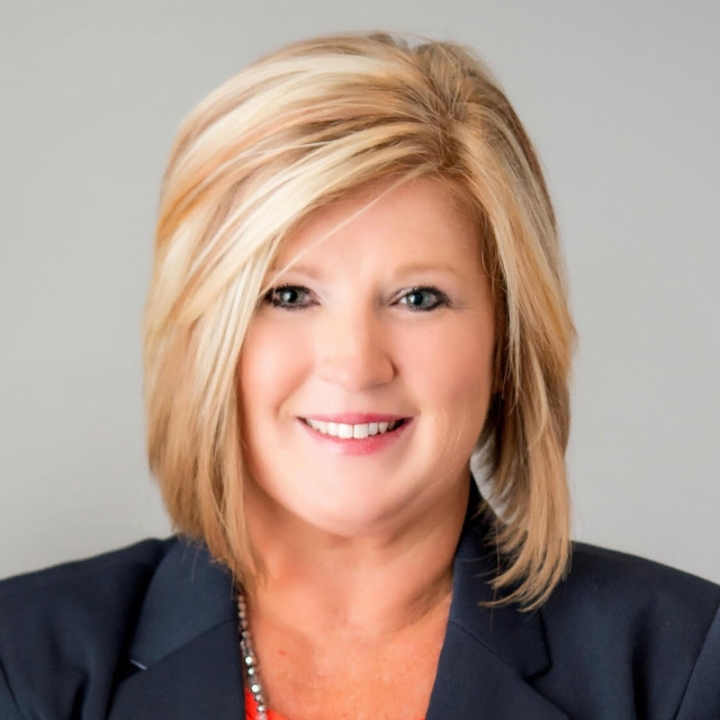Fentanyl: Separating Fact from Fiction

In case you haven’t heard, fentanyl is a dangerous drug. Story after story all appear to come to the same dramatic conclusion: if you touch even a miniscule speck of fentanyl, you will immediately die.
There is so much sensationalism surrounding fentanyl that the preferred unit for measuring fentanyl seems to be in the number of people it could kill. Take this article from Arizona in February 2019. It states that “in Arizona in 2018, the DEA…seized 445 pounds of fentanyl…which is roughly enough to kill 75 million people.” Statistics like this are not only misleading, but add greatly to the stigma surrounding drug use.
This is not to say that fentanyl should not be taken seriously for those who are using drugs. We recently had a patient on the toxicology service who took what he thought was a Percocet, but actually contained fentanyl. The two friends that he used with woke up, but he did not. Finding the true number of fentanyl-related deaths and overdoses is made difficult by testing limitations at most hospitals, as fentanyl is not a drug that is detected on most commonly used urine drug screens. However, studies have shown that mortality from fentanyl and its derivatives has increased up to 300% among young adults since 2013 (Krieger 2018). The steep rise in opioid deaths correlates almost directly with the rise in contamination of heroin with fentanyl and its derivatives (CDC 2017). For this reason the Iowa Harm Reduction Coalition (IHRC) recommends checking drugs with fentanyl test strips before use. Fentanyl contamination is also not limited to opioids. It has been found in methamphetamine, cocaine as well as other drugs. Though the risks of contamination of other drug classes may also be overblown.
While the danger of fentanyl is certainly real for people who use drugs (PWUD), there is a myth that continues to be spread across the media that fentanyl poses a significant risk to police and other first responders. This dramatically overblown response ignores both the reality of the way fentanyl works and the fact that in almost every case, the symptoms described by those reportedly experiencing “unintentional overdoses” don’t match up with the actual human responses to an opioid overdose. Unfortunately, this myth does create the risk of real world harm: increasing stigmatization and fear of PWUD. The fear of exposure causes police to see PWUD as dangerous. Based solely on a story they heard from a friend or saw online, they may be hesitant to provide life-saving naloxone for someone who desperately needs it. The problem is that few, if any of these stories represent true opioid toxicity. These stories do highlight some fundamental principles that I always discuss with medical students and residents who I teach in my Toxicology course at the University of Iowa: the first being that exposure does not equal toxicity. For an exposure to lead to toxicity, enough of the drug needs to be absorbed and get into the person’s circulation in order for it to have an effect.
The most common routes of exposure in these sensational media articles are skin contact and accidental inhalation. Either some white powder brushed a first responder’s skin or was aerosolized by a fan or other means. While fentanyl is amenable to dermal absorption, it is not a quick process. Fentanyl patches that are used therapeutically take 3-13 hours to reach a therapeutic concentration (ACMT 2016). If you covered both of your palms with fentanyl patches, it would take around 14 minutes to receive 100 micrograms of fentanyl, which is a common dose for pain relief that physicians prescribe to an adult patient. While fentanyl has pretty good absorption through the lungs, the drug itself is very difficult to aerosolize in any significant amount that could lead to toxicity. Fentanyl derivatives have likely been aerosolized and weaponized in Russia, but this is a unique case and likely required specialized formulation and/or dispersal devices. The small risk of significant dermal or inhalational exposure would easily be mitigated with a regular pair of latex or nitrile gloves and a simple face mask, which are already standard PPE (personal protective equipment) for any first responder.
The second principle I teach to my toxicology students is that the symptoms that a patient is having must match the poison in order to establish a causal link. Fentanyl is an opioid and toxicity from all opioids results in the classic triad of small pupils, central nervous system depression (somnolence, nodding off), and respiratory depression. This last effect is why opioid toxicity is deadly: it stops the person from breathing. The cases that are reported in the media often describe dizziness, lightheadedness, numbness, palpitations (racing/heavy heartbeat) and a myriad of other symptoms that don’t fit with opioid toxicity. And while I can’t say I was there with the officers in these cases, their symptoms sound suspiciously like a panic attack. Symptoms of which often include lightheadedness, dizziness, palpitations, chest pain, and hyperventilation. These types of symptoms are justifiable for other reasons: law enforcement, EMS, and other first responders have stressful jobs, in which they may regularly experience anxiety and trauma. Given that they are continually hearing about the dramatic danger of an instant and potentially fatal overdose from incidental fentanyl exposure, a panic attack is an understandable response to encountering an individual who has overdosed and being tasked with the responsibility for saving their life. Naloxone, the antidote to opioid toxicity, unfortunately does not treat panic attacks or anxiety.
It is also important to remember that just because someone received naloxone does not mean that they needed naloxone. In the Emergency Department, naloxone is reserved for those patients who are showing signs of significant toxicity, as in respiratory depression. We do not administer naloxone to someone just because they are sleepy, since that’s not what kills them. The most egregious example of someone getting naloxone that doesn’t need it is the officer who self-administers naloxone. If you are overdosing on opioids, you will not be able to give yourself naloxone (see signs of opioid toxicity above). So if there is one thing to remember from this article, it’s this: if you can administer naloxone to yourself, you do not need naloxone. This is why if you’re going to use opioids, you should always use with someone else, with naloxone readily accessible.
The extremely low likelihood of significant absorption and the disconnect between the reported symptoms make it highly unlikely that any of these cases represent opioid toxicity. I am not aware of a single case of supposed fentanyl exposure that has been confirmed. There is a large group of physicians, harm reductionists, twitter personalities, and others who have been trying to dispel this myth for years. The American College of Medical Toxicologists and the American Academy of Clinical Toxicology released a joint position statement on fentanyl exposure. IHRC’s own Dan Runde also wrote an article about the myth of fentanyl exposure for first responders. And finally, some media outlets have started to listen to all of us fighting this myth.
By not using evidence-based approaches to fentanyl, we are putting those who use drugs at even greater risk. The delay it may take to receive naloxone from a first responder because they are worried about passive fentanyl exposure could mean all the difference for the person who overdosed. By perpetuating the myth that fentanyl poses a significant risk to first responders, the media has increased the danger and the stigma towards PWUD.
Written by:
Dr. Josh Radke
Emergency Medicine Physician
Associate Professor of Medical Toxicology
University of Iowa Hospitals and Clinics
References:
- Junious, Luv. Cronkite News. Arizona PBS. Downloaded from: https://cronkitenews.azpbs.org/2019/02/22/as-fentanyl-seizures-rise-so-do-safety-concerns-around-the-deadly-drug/
- Krieger, et al. High willingness to use rapid fentanyl test strips among young adults who use drugs. Harm Reduct J. 2018 Feb. 15:7
- Hedegaard, et al. Drug Overdose Deaths in the United States, 1999 – 2016. CDC National Center for Health Statistics. Downloaded from https://www.cdc.gov/nchs/products/databriefs/db294.htm.
- Daly, Max. The truth about drug dealers lacing cocaine with fentanyl. Vice News. Downloaded from: https://www.vice.com/en_us/article/8xyzkp/the-truth-about-drug-dealers-lacing-cocaine-with-fentanyl
- ACMT and AACT Position Statement: Preventing Occupational Fentanyl and Fentanyl Analog Exposure to Emergency Responders. Downloaded from: https://www.acmt.net/_Library/Positions/Fentanyl_PPE_Emergency_Responders_.pdf
- History.com Editors. Hostage crisis in Moscow theatre. History.com. Downloaded from: https://www.history.com/this-day-in-history/hostage-crisis-in-moscow-theater
- Runde, Dan. Myths in Emergency Medicine: First Responders Worried about Fentanyl OD? Minimize Fear by Quashing that Myth. Emergency Medicine News. 2018. Vol 40. P. 33.
- NY Times Editorial Board. Fear, Loathing and Fentanyl Exposure. New York Times. Downloaded from: https://www.nytimes.com/2019/04/04/opinion/fentanyl-opioids-exposure.html
What We're Listening To: Harm Reduction Podcasts, Spring 2019
When we started this blog late in 2018, it was primarily because members of our community wanted to know what their friends were reading, watching, and listening to in order to become better educated on drug policy, public health, the overdose crisis, and community organizing.
The blog began as a sort of repository for the cataloging of resources. We are picking this initial concept back up today with a wide-ranging list of podcasts, each coming highly recommended by IHRC volunteers, staff, board members, and participants. We hope you’ll dig this group of podcasts for your commute to work, time on the treadmill, relaxation time before bed, etc. Listen wherever you download podcasts: Apple Music, apple podcast app, and beyond.
A labor of love of three leading drug policy journalists, this podcast asks big, nuanced drug market questions, and celebrates the work of harm reduction experts from around the country. Produced and recorded by Christopher Moraff, Zachary Siegel, and Troy Farah, the episodes are well produced, smart conversations on critical questions about the drug war that have implications right now. For example: why are heroin and meth and cocaine and crack suddenly contaminated with varying amounts of fentanyl? What is the market-based logic for the insertion of fentanyl into the drug supply? Is the presence of fentanyl in stimulants an accident, and if so, why are fentanyl markets so variable from one neighborhood to another? With episodes that range from the history of traditional agriculture in Afghanistan and Columbia to the FDA’s regulation of Kratom and the DOJ’s response to supervised consumption spaces, Narcotica is a uniquely smart piece of reporting.
– Recommended by Tiffany C.
Prohibited is a newer podcast that debuted early in 2019 and reports on of the moment drug policy news stories, as well older and evolving stories related to the global and domestic production, selling, and consumption of drugs. Recent guests include national harm reduction experts (like our friends at Bmore Power!) discussing local campaigns for safe consumption space legalization and the DOJ; leaders from the campaign to legalize psychedelics in Colorado; individuals involved in the creation of the Silk Road; historians well versed in the time course of US alcohol prohibition; and policy experts working to understand the technicalities of DC’s cannabis regulation. Overall, the podcast explores the viewpoints of those who look to dismantle drug prohibition and those who work to perpetuate the war on drugs.
– Recommended by Joe Z.
Hosted and Produced by Kate Werning, this is a beautiful podcast that explores the intersections of collective healing and social change. The podcast is inspiring, brilliant, and thought provoking, giving the listener a broad set of foundational skills in movement work, reflection, self care, campaign development / leadership, trauma healing, gratitude, vulnerability, and white supremacy. Frequented by regular guest Adrienne Marie Brown, the podcast draws heavily in tone, philosophy, and vibe from her books Emergent Strategy and Pleasure Activism. Episodes include interviews, exercises, lectures, and practices for both folks who are brand new to the concept of healing justice and folks who have decades of familiarity.
– Recommended by Sarah Z.
In production from 2015 – March 2018, this podcast focuses on science, culture, and all things in-between. Produced by Students for Sensible Drug Policy (SSDP), this podcast is unique in its coverage of of the moment drug policy news updates.
Drugs and Stuff is the Drug Policy Alliance’s semi-regular podcast. DPA is the nation’s leading organization working to end the war on drugs. DPA focusES on legalizing marijuana; criminal justice reform and ending draconian prison sentences for drugs; harm reduction policies that prevent overdoses and save lives; and we educate the public about drugs while dispelling popular myths and misinformation.
6. In Sickness and in Health – Season 2
The second season of In Sickness and In Health is a Who’s Who in harm reduction. The season dives into the “opioid crisis” and in working to unpack the drivers of the modern overdose epidemic. The producers interview many guests who work as street-based outreach workers, researchers, policy makers, and public health experts, working episode by episode to trace the origins of the crisis and interrogate potential solutions. While some of the topics explored in this podcast may not be particularly stimulating for many who work in drug policy and harm reduction, each episode features stellar guest interviewees. Topics examined include the Scott County, IN HIV outbreak and subsequent SSP implementation; Neo-natal abstinence syndrome; the brain disease model of addiction vs. other competing neurological models for explaining chaotic drug use; adverse childhood experiences and their relationship to opioid use later in life. Of all the podcasts we recommend, this one may the most well produced by a long shot.
– Recommended by Nick.
The official podcast of the Journal of Addiction Medicine, this podcast is produced by ASAM and draws from recent journal publications in order to disseminate evidence-based public health and health care research findings quickly. Episodes are short, to the point, and focus primarily on human services and health care issues, rather than emphasizing new research findings emerging from the basic sciences or physiology.
Remembering Andrew Beeler, IHRC's Harm Reduction Services Coordinator
Andrew Beeler, December 19, 1988 - March 5, 2019.
On Tuesday, March 5th, we lost our beloved Andy, IHRC’s Harm Reduction Services Coordinator.
Andy began doing harm reduction work as a teenager, volunteering remotely for harm reduction organizations across the country. Over 15 years, Andy saved dozens of lives from overdose, and taught hundreds to prevent HIV, hepatitis, and other infectious diseases transmittable through IV drug use. After spending two years incarcerated in the Rockwell City prison for repeated heroin possession charges, Andy became a vocal advocate for the restoration of felon voting rights. Andy was hired to lead IHRC’s hepatitis C programs in September 2018. A quick learner, he also managed IHRC’s office, provided case management to 25 clients, conducted street-based outreach, and coordinated Human Resources and information technology for the organization (including coding a software package for IHRC’s case management program). He provided naloxone and overdose prevention training at local methadone clinics and to IHRC’s participants.
Andy was deeply intelligent. For someone who barely passed high school, Andy’s intellect was more than remarkable. Everyone who knew him knew that, but in his work, national experts in science and medicine and drug policy recognized it as well. Last Wednesday, during a briefing of the full U.S. House of Representatives, a national drug policy expert spoke to Congress about the opioid crisis and about Andy’s impact and what it means to lose him. On Thursday, a former drug policy advisor to Obama called IHRC. An internationally respected physician and researcher, he had been writing a grant to fund Andy to work with him and publish a study on poly substance use in the U.S. He said the only problem he had run into was that he needed 12 more Andys to help with the study, but in his 30 year career had only met one. In the last year of his life, Andy had built an innovative program (one of only a few in the country) to help IV drug users cure their hepatitis C. He was desperate to get naloxone into all of the jails in Iowa so that it would be given to people upon release. And he was working on a plan to start a buyers club for hepatitis C meds, where he had found factories in other countries to buy the medicines from for cheap and could bring them back into the US to dispense to other drug users, just like people did for HIV in the 90s.
Andy was gentle and kind and he was committed to helping others. But he didn’t do it because he felt badly for people or felt guilty or thought that was what he should do. He wasn’t out here to save anybody. He did it because he so fiercely believed in people’s right to survive, be free, and be healthy. Sometimes his belief in doing what was right could frustrate him deeply. He was so impatient for justice and he had no time for incremental small steps. He did the work he did because he was naturally nurturing, a care taker of others. Some people would say that Andy acted in solidarity with other people, but really he just saw all drug users as an extension of himself, as bound together by common suffering under the oppression and trauma. When we began to tell the people that Andy worked with of his passing, the people whose lives he had saved, the clients who knew him as their friend and supporter of their health, they were… devastated. In addition to the people who had told me Andy saved their life, one woman told me that he had told her about his drug use when they met, and that that had made her feel deeply comfortable and put her at ease to share with him what she was going through. Another wrote that she had been living with hepatitis for over 10 years, but Andy’s ability to comfort and support her lead her to seek treatment for the first time.
When the harm reduction family loses one of our own to overdose, its hard to remember why our work matters. No matter how much naloxone that is distributed, how much better access to MAT gets, it won’t save every life. Even the lives of those drug users who are cautious, who test their drugs and have decades of experience in managing their use to prevent overdose. Andy’s death is a drug war casualty. His death is the consequence of a desire to be medicated with suboxone and a fear of returning to prison if he sought help. His death is the result of a poisoned drug supply, where products being sold as opiates contain fentanyl. His death is the result of pain and suffering (alleviated by opiates) that our health care and criminal justice systems had contributed to, rather than helped to find a salve for.
Long Reads for the Holidays
Use the quiet of the last few days of 2018 to catch up on long reads from the harm reduction community around the U.S.
Recovery experts set up new ‘religion’ in Maine that may skirt drug laws
L EWISTON, Maine – On an 11-degree night here this month, an unconventional mass was held outdoors, next to a 2017 Honda parked on a street corner. The altar took the form of the small car’s hatchback trunk. The not-so-typical communion: sterile needles, the overdose antidote naloxone, and the rubber tourniquets used prior to drug injection.
Deep Systemic Change: My 10 Steps to Transform Addiction Treatment
As panel after after commission after white paper is put forward claiming to solve the overdose crisis, you’d think that somewhere there’d be a short, sensible guide for how to improve our health care system to better manage addiction and pain. But most of these reports and discussions dance around the edges and bureaucratic obstacles to change.
Demanding Harm Reduction – Reframe Health and Justice – Medium
At the Harm Reduction Conference this year, there was a lot of conversation which highlighted just how far harm reduction organizations are from sex worker rights’ organizations, with SESTA sitting firmly in that chasm.
‘Heroin Was My Life Preserver’ – LOVE/HATE – Medium
Vicki Allendorf noticed that her oldest son Zachary was losing weight. “Mom, I’ve just been working out,” he’d say. But Allendorf, who is Midwestern-nice with a big pinch of Type A, knew that her skater son was no gym rat. “He looked gaunt,” she said.
After Civil Commitment, Medication and Sense of Fairness Help Prevent Relapse | SPH | Boston University
Civil commitment for substance use is a legal provision in 33 states, where a judge can order someone into treatment-usually inpatient-because their substance use poses a high risk of harm. Civil commitment is increasing in the face of the opioid epidemic, but research has been limited on whether it improves clinical and legal outcomes.
I’m Worried About Our Community – Nigel Brunsdon – Medium
I’m worried about my community, I really am. This year (and a few previous ones) has been a hard one for many of us. We’ve lost some important members of the harm reduction community, and in the UK and the US political will at the government level to be proactive in promoting harm reduction interventions has been lacking.
The Future of Healing: Shifting From Trauma Informed Care to Healing Centered Engagement
Shawn Ginwright Ph.D. From time to time, researchers, policy makers, philanthropy and practitioners all join together in a coordinated response to the most pressing issues facing America’s youth. I’ve been involved with this process for long enough to have participated in each of these roles.
What I Found When I Applied Hundreds of Fentanyl Tests to Philly’s Street Drugs
Back in mid-2017 I embarked on a journalistic endeavor that, to my knowledge, has not been replicated. Through a contact in the New York harm reduction community, I purchased a box of 100 test strips developed by a Canadian firm to detect the presence of fentanyl in urine.
Medical Providers Are Failing Queer Men of Color Who Use Crystal Meth
Increasing rates of crystal methamphetamine use amongst Black and Latino queer men is often overlooked in the media. In response, Harm Reduction Coalition, BEAM (Black Emotional & Mental Health) Collective, and the Counter Narrative Projects have released a report the risks faced by this community and providing a valuable toolkit for care providers to them.
We Need to Talk About Benzodiazepines-Including Their Use in Drug Combinations
Opioids like heroin and fentanyl have grabbed the media and legislative spotlight- from soaring overdose fatalities to the misguided prescription restrictions and drug-induced homicide laws ostensibly intended to combat them. What’s glossed over is that our overdose crisis primarily relates to polysubstance use.
The Rage of Overdose Grief Makes It All Too Easy to Misdirect Blame
It was 4:45 am on March 13, 2016. My phone was ringing over and over, and there was loud banging. I woke up confused and terrified. My mother was hammering at my front door. I remember the look on her face and hearing words that I could not even process or understand.
Jamie Favaro’s Quest to Bring Online Naloxone Access Nationwide
What I’ve learned is that [syringe exchange programs] are everywhere,” says Jamie Favaro, founder of Next Harm Reduction. “Even if we’re unsanctioned, unfunded, there are underground syringe exchanges across this country. And I’m finding out about new ones every day.” Yet even all of these are not enough; there are still many people who can’t access them.
What We're Reading: November 2018
Welcome to IHRC's new blog, a space for learning about harm reduction and exploring voices from the harm reduction community (and around the internet). Here's what we're reading and discussing this month.
Cops in Harm Reduction: An Insult? Or Incremental Positive Change?
Peter Sadler looked like a lost member of the Beastie Boys, but as soon as he spoke it was obvious that he was a cop. As we sat in the hotel lobby at the 2018 National Harm Reduction Conference in New Orleans, I tried to reconcile his attire-a black DOPE Project hoodie and Utah Naloxone cap-with the straight posture and authoritative voice of a 20-year law enforcement veteran.
Charging ‘Dealers’ with Homicide: Explained
In our Explainer series, Justice Collaborative lawyers and other legal experts help unpack some of the most complicated issues in the criminal justice system. We break down the problems behind the headlines-like bail, civil asset forfeiture, or the doctrine-so that everyone can understand them.
Switzerland’s Experiment With Addiction Treatment
” I started taking heroin as a way of coping with my psychological problems,” said David, 50, an addict for 25 years. “It destroyed me. I lost my job as a watchmaker. I ‘borrowed’ money from my girlfriend, and my friends. I ended up on the street.
Street level activists are leading the fight against fentanyl deaths – and it’s working
St. Ann’s Corner of Harm Reduction sits on a busy section of Westchester Avenue in the Bronx, in the shadow of an elevated train track. Inside the facility, patrons can come in from the cold, get a hot meal, and sit in a recliner watching TV or chatting with friends.
The making of an opioid epidemic
The long read: When high doses of painkillers led to widespread addiction, it was called one of the biggest mistakes in modern medicine. But this was no accident
My Relationships With Drugs Vary Wildly: We Must Recognize Spectrums
For the last 14 years I have bounced around nearly every part of the drug-use spectrum, though I’ve rarely stayed at the extreme of total abstinence for long. My experiences have ranged from smoking pot out of a bong made from a hummingbird feeder, found in the top of a closet of a friend’s house at a sleepover when we were 14 years old, right through to injecting heroin and crack cocaine.
This Man Was Devoted to Making Life Safer for People With Addiction
Dan Bigg with his dog Tucker / Courtesy of Suzanne Carlberg-Racich Dan Bigg saved tens of thousands of lives, perhaps hundreds of thousands. Mothers, daughters, sisters, brothers, sons, fathers-countless loved ones survived addictions thanks to the work of the Chicago native and those he inspired.
The Harm Reduction Movement: Bigger Than Ever, But Facing Threats
If numbers gauge the health of a movement, this one is flourishing. Two thousand people crammed into a vast hotel ballroom in New Orleans on October 18 for the opening of the National Harm Reduction Conference- a record for the event and also, organizers reckon, for any harm reduction conference in the world.
Does Health Insurance Cover Rehab?
Christopher Lemercier/Unsplash This is part of Tonic’s Healthcare Guide series. See the other guides here , and find the glossary here . Download the PDF version of this guide here and a find a PDF of the master document here.
Our favorite harm reduction instagram accounts of 2018
Harm Reduction Instagram was poppin' in 2018! We review our favorite accounts of the year where we look to find complex philosophical concepts broken down in well designed, pop culture themed graphics, drug user organizing history, updates on local movement organizing work happening around North America, and cute merch.
While instagram can at times be a platform for sharing superficial information, we find harm reduction instagram to be a valuable source for information and visuals on what it means to be a harm reductionist, drug user, and/or advocate for drug policy reform and overdose prevention in the current moment.
Indiana Recovery Alliance @indiana_recovery_alliance
The realest harm reduction fact:
View this post on InstagramA post shared by Indiana Recovery Alliance (@indiana_recovery_alliance) on
Marilou Gagnon @ml_gagnon
Marilou is a bad ass Canadian nurse who rocks all of the best harm reduction gear and shares updates on new and emerging research, as well as documentation of harm reduction movement organizing in Canada.
View this post on InstagramA post shared by Marilou Gagnon (@ml_gagnon) on
Inland Empire Harm Reduction @inlandempireharmreduction
Inland Empire has some of the best design work (and maybe the best harm reduction t-shirt in the game) that cleverly packages harm reduction philosophy into beautiful square-sized art work.
View this post on InstagramA post shared by Inland Empire Harm Reduction (@inlandempireharmreduction) on
Community Health Project LA @community_health_project_la
We love CHPLA's documentation of what a working syringe exchange program and the existence of a harm reduction organization looks like on a day to day basis. Plus we love our dogs and think of them as honorary outreach workers too.
View this post on InstagramA post shared by community health project LA (@community_health_project_la) on
Maine Access Points @maineaccesspoints
Maine Access Points is a newer harm reduction organization providing naloxone access for rural Maine and had the hottest swag of the 2018 national harm reduction conference. We're waiting (not so patiently) for the launch of their online merch shop.
View this post on InstagramA post shared by Maine Access Points (@maineaccesspoints) on
Bmore Power @bmorepower
Bmore Power (of Baltimore) is crushing the rest of the harm reduction world in integrating overdose prevention services (naloxone distribution and drug testing) with community organizing that is solid, smart, and grounded. They set the standard for what building power can look like for people who use drugs.
View this post on InstagramA post shared by bmore POWER (@bmorepower) on
Sonoran Prevention Works @sonoranpreventionworks
Our #1 harm reduction crush, SPWAZ is based in Phoenix and uses instagram to demonstrate how harm reduction organizations can strategically build capacity and power in red states.
View this post on InstagramA post shared by Sonoran Prevention Works (@sonoranpreventionworks) on
Tino Fuentes @onit4you
An OG harm reductionist, Tino now spends his time testing drugs for fentanyl in the New York / New Jersey metro area and teaching users to modify their patterns of use in order to prevent fentanyl overdose. Tino uses instagram as a platform for sharing real time information on where he's finding fentanyl in the city.
View this post on InstagramA post shared by 🇵🇷Tino Fuentes🇨🇺 (@onit4you) on
What We're Reading in 2019
Old Favorites & Classics
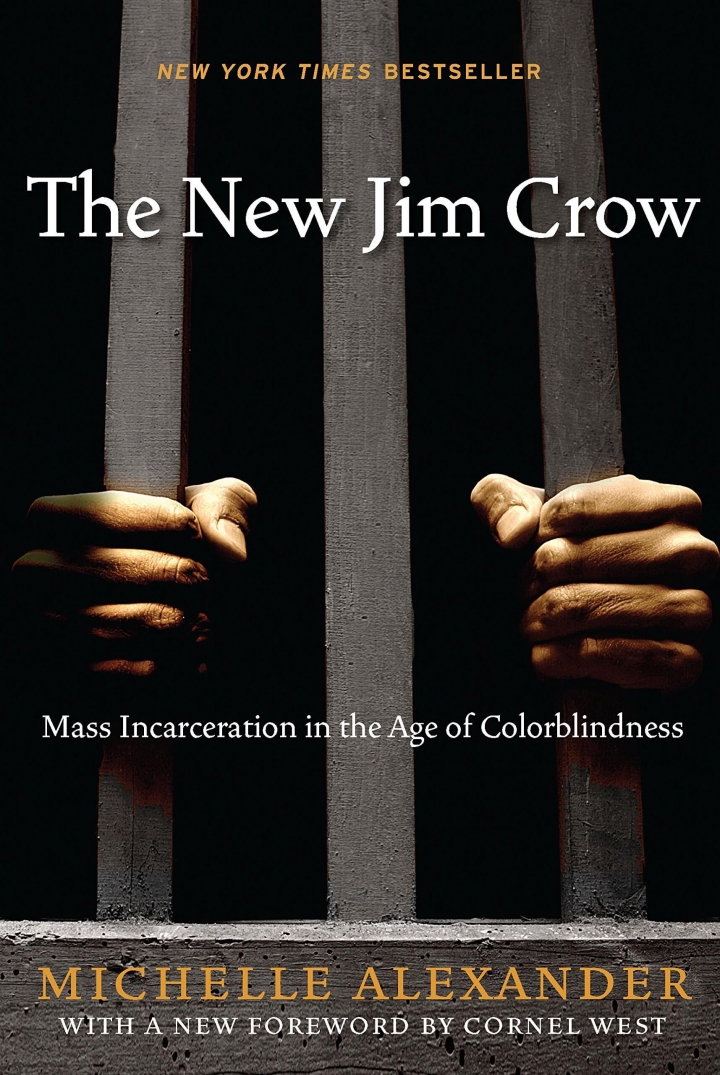
The New Jim Crow: Mass Incarceration in the Age of Color-blindness
Michelle Alexander
Once in a great while a book comes along that changes the way we see the world and helps to fuel a nationwide social movement. The New Jim Crow is such a book. Praised by Harvard Law professor Lani Guinier as “brave and bold,” this book directly challenges the notion that the election of Barack Obama signals a new era of colorblindness. With dazzling candor, legal scholar Michelle Alexander argues that “we have not ended racial caste in America; we have merely redesigned it.” By targeting black men through the War on Drugs and decimating communities of color, the U.S. criminal justice system functions as a contemporary system of racial control—relegating millions to a permanent second-class status—even as it formally adheres to the principle of colorblindness.
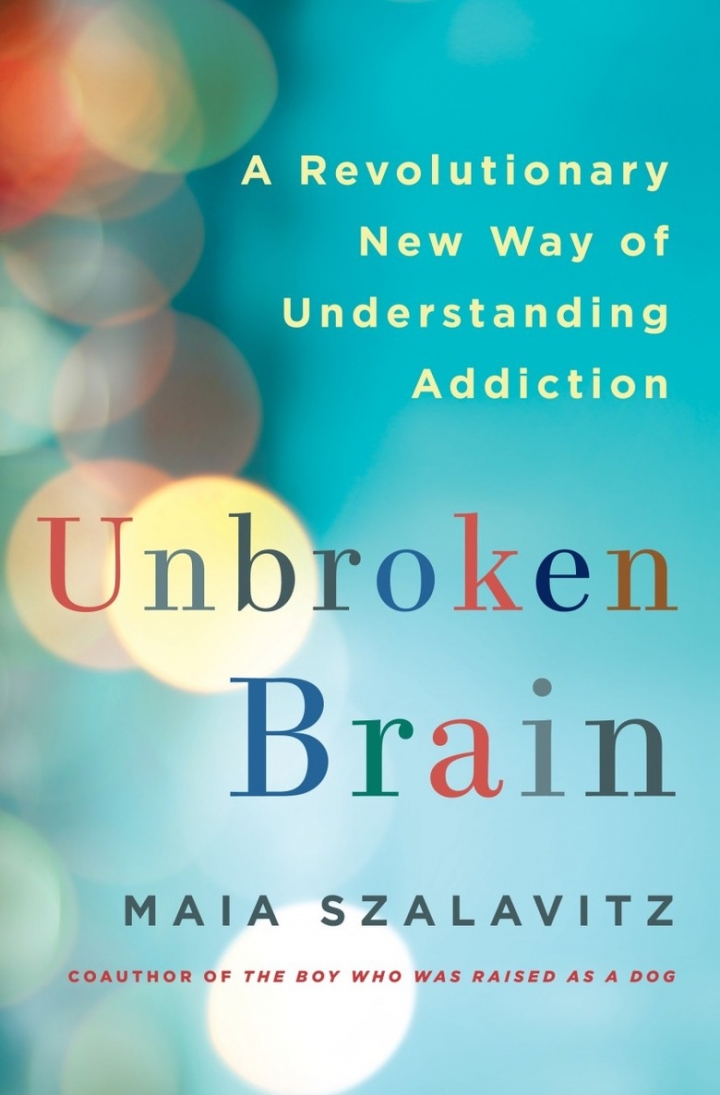
Unbroken Brain: A Revolutionary New Way of Understanding Addiction
Maia Szalavitz
More people than ever before see themselves as addicted to, or recovering from, addiction, whether it be alcohol or drugs, prescription meds, sex, gambling, porn, or the internet. But despite the unprecedented attention, our understanding of addiction is trapped in unfounded 20th century ideas, addiction as a crime or as brain disease, and in equally outdated treatment. Challenging both the idea of the addict’s “broken brain” and the notion of a simple “addictive personality,” Unbroken Brain offers a radical and groundbreaking new perspective, arguing that addictions are learning disorders and shows how seeing the condition this way can untangle our current debates over treatment, prevention and policy. Like autistic traits, addictive behaviors fall on a spectrum — and they can be a normal response to an extreme situation. By illustrating what addiction is, and is not, the book illustrates how timing, history, family, peers, culture and chemicals come together to create both illness and recovery- and why there is no “addictive personality” or single treatment that works for all. Combining Maia Szalavitz’s personal story with a distillation of more than 25 years of science and research, Unbroken Brain provides a paradigm-shifting approach to thinking about addiction.
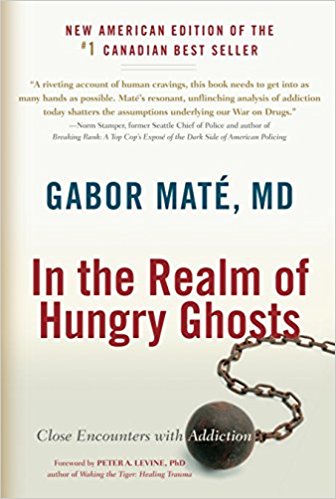
In the Realm of Hungry Ghosts: Close Encounters with Addiction
Gabor Mate
Based on Gabor Mate’s two decades of experience as a medical doctor and his groundbreaking work with the severely addicted on Vancouver’s skid row, In the Realm of Hungry Ghosts radically reenvisions this much misunderstood field by taking a holistic approach. Dr. Mate presents addiction not as a discrete phenomenon confined to an unfortunate or weak-willed few, but as a continuum that runs throughout (and perhaps underpins) our society; not a medical “condition” distinct from the lives it affects, rather the result of a complex interplay among personal history, emotional, and neurological development, brain chemistry, and the drugs (and behaviors) of addiction. Simplifying a wide array of brain and addiction research findings from around the globe, the book avoids glib self-help remedies, instead promoting a thorough and compassionate self-understanding as the first key to healing and wellness. In the Realm of Hungry Ghosts argues persuasively against contemporary health, social, and criminal justice policies toward addiction and those impacted by it. The mix of personal stories—including the author’s candid discussion of his own “high-status” addictive tendencies—and science with positive solutions makes the book equally useful for lay readers and professionals.
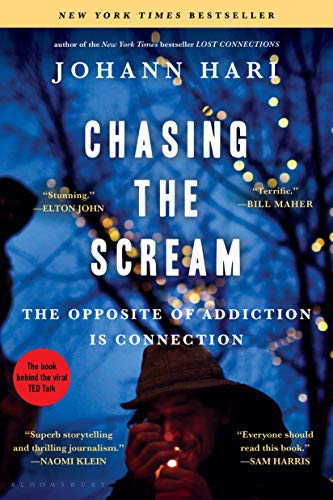
Chasing the Scream
Johann Hari
For the first time, the startling full story of the disastrous war on drugs–propelled by moving human stories, revolutionary insight into addiction, and fearless international reporting. What if everything you think you know about addiction is wrong? One of Johann Hari’s earliest memories is of trying to wake up one of his relatives and not be able to. As he grew older, he realized he had addiction in his family. Confused, unable to know what to do, he set out on a three-year, 30,000-mile journey to discover what really causes addiction–and what really solves it. He uncovered a range of remarkable human stories–of how the war on drugs began with Billie Holiday, the great jazz singer, being stalked and killed by a racist policeman; of the scientist who discovered the surprising key to addiction; and of the countries that ended their war on drugs–with extraordinary results.
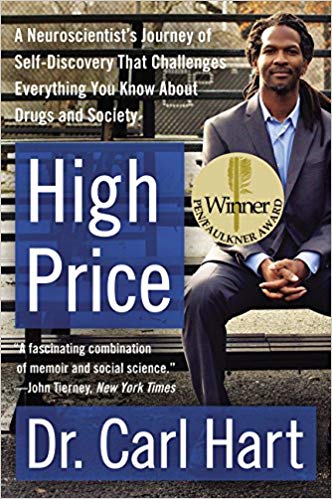
High Price: A Neuroscientist's Journey of Self Discovery that Challenges Everything You Know about Drugs and Society
Carl Hart
High Price is the harrowing and inspiring memoir of neuroscientist Carl Hart, a man who grew up in one of Miami’s toughest neighborhoods and, determined to make a difference as an adult, tirelessly applies his scientific training to help save real lives.
Young Carl didn’t see the value of school, studying just enough to keep him on the basketball team. Today, he is a cutting-edge neuroscientist—Columbia University’s first tenured African American professor in the sciences—whose landmark, controversial research is redefining our understanding of addiction. In this provocative and eye-opening memoir, Dr. Carl Hart recalls his journey of self-discovery, how he escaped a life of crime and drugs and avoided becoming one of the crack addicts he now studies. Interweaving past and present, Hart goes beyond the hype as he examines the relationship between drugs and pleasure, choice, and motivation, both in the brain and in society. His findings shed new light on common ideas about race, poverty, and drugs, and explain why current policies are failing.
Deeper Dives

Righteous Dopefiend
Philippe Bourgois
This powerful study immerses the reader in the world of homelessness and drug addiction in the contemporary United States. For over a decade Philippe Bourgois and Jeff Schonberg followed a social network of two dozen heroin injectors and crack smokers on the streets of San Francisco, accompanying them as they scrambled to generate income through burglary, panhandling, recycling, and day labor. Righteous Dopefiend interweaves stunning black-and-white photographs with vivid dialogue, detailed field notes, and critical theoretical analysis. Its gripping narrative develops a cast of characters around the themes of violence, race relations, sexuality, family trauma, embodied suffering, social inequality, and power relations. The result is a dispassionate chronicle of survival, loss, caring, and hope rooted in the addicts’ determination to hang on for one more day and one more “fix” through a “moral economy of sharing” that precariously balances mutual solidarity and interpersonal betrayal.
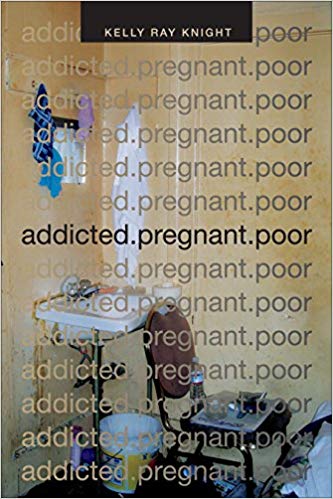
Addicted, Pregnant, and Poor
Kelly Ray Knight
For the addicted, pregnant, and poor women living in daily-rent hotels in San Francisco’s Mission district, life is marked by battles against drug cravings, housing debt, and potential violence. In this stunning ethnography Kelly Ray Knight presents these women in all their complex humanity and asks what kinds of futures are possible for them given their seemingly hopeless situation. During her four years of fieldwork Knight documented women’s struggles as they traveled from the street to the clinic, jail, and family court, and back to the hotels. She approaches addicted pregnancy as an everyday phenomenon in these women’s lives and describes how they must navigate the tension between pregnancy’s demands to stay clean and the pull of addiction and poverty toward drug use and sex work. By creating the space for addicted women’s own narratives and examining addicted pregnancy from medical, policy, and social science perspectives, Knight forces us to confront and reconsider the ways we think about addiction, trauma, health, criminality, and responsibility.
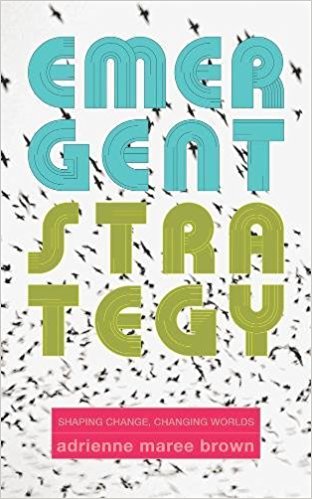
Emergent Strategy: Shaping Change, Shaping Worlds
Adrienne Maree Brown
Inspired by Octavia Butler’s explorations of our human relationship to change, Emergent Strategy is radical self-help, society-help, and planet-help designed to shape the futures we want to live. Change is constant. The world is in a continual state of flux. It is a stream of ever-mutating, emergent patterns. Rather than steel ourselves against such change, this book invites us to feel, map, assess, and learn from the swirling patterns around us in order to better understand and influence them as they happen. This is a resolutely materialist “spirituality” based equally on science and science fiction, a visionary incantation to transform that which ultimately transforms us.
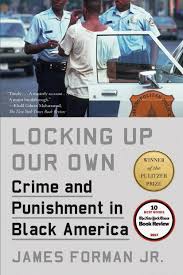
Locking Up Our Own: Crime and Punishment in Black America
James Forman Jr.
Former public defender James Forman, Jr. is a leading critic of mass incarceration and its disproportionate impact on people of color. In Locking Up Our Own, he seeks to understand the war on crime that began in the 1970s and why it was supported by many African American leaders in the nation’s urban centers. Forman shows us that the first substantial cohort of black mayors, judges, and police chiefs took office amid a surge in crime and drug addiction. Many prominent black officials, including Washington, D.C. mayor Marion Barry and federal prosecutor Eric Holder, feared that the gains of the civil rights movement were being undermined by lawlessness―and thus embraced tough-on-crime measures, including longer sentences and aggressive police tactics. In the face of skyrocketing murder rates and the proliferation of open-air drug markets, they believed they had no choice. But the policies they adopted would have devastating consequences for residents of poor black neighborhoods. A former D.C. public defender, Forman tells riveting stories of politicians, community activists, police officers, defendants, and crime victims. He writes with compassion about individuals trapped in terrible dilemmas―from the men and women he represented in court to officials struggling to respond to a public safety emergency. Locking Up Our Own enriches our understanding of why our society became so punitive and offers important lessons to anyone concerned about the future of race and the criminal justice system in this country.
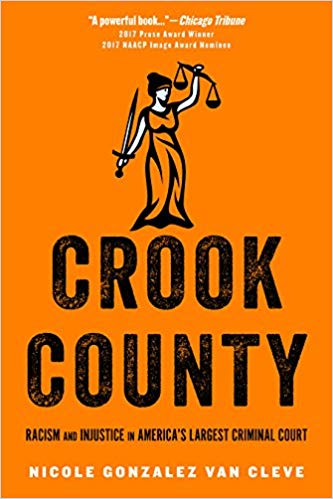
Crook County: Racism and Injustice in America's Largest Criminal Court
Nicole Gonzalez Van Cleve
Americans are slowly waking up to the dire effects of racial profiling, police brutality, and mass incarceration, especially in disadvantaged neighborhoods and communities of color. The criminal courts are the crucial gateway between police action on the street and the processing of primarily black and Latino defendants into jails and prisons. And yet the courts, often portrayed as sacred, impartial institutions, have remained shrouded in secrecy, with the majority of Americans kept in the dark about how they function internally. Crook County bursts open the courthouse doors and enters the hallways, courtrooms, judges’ chambers, and attorneys’ offices to reveal a world of punishment determined by race, not offense.
Fresh Cuts
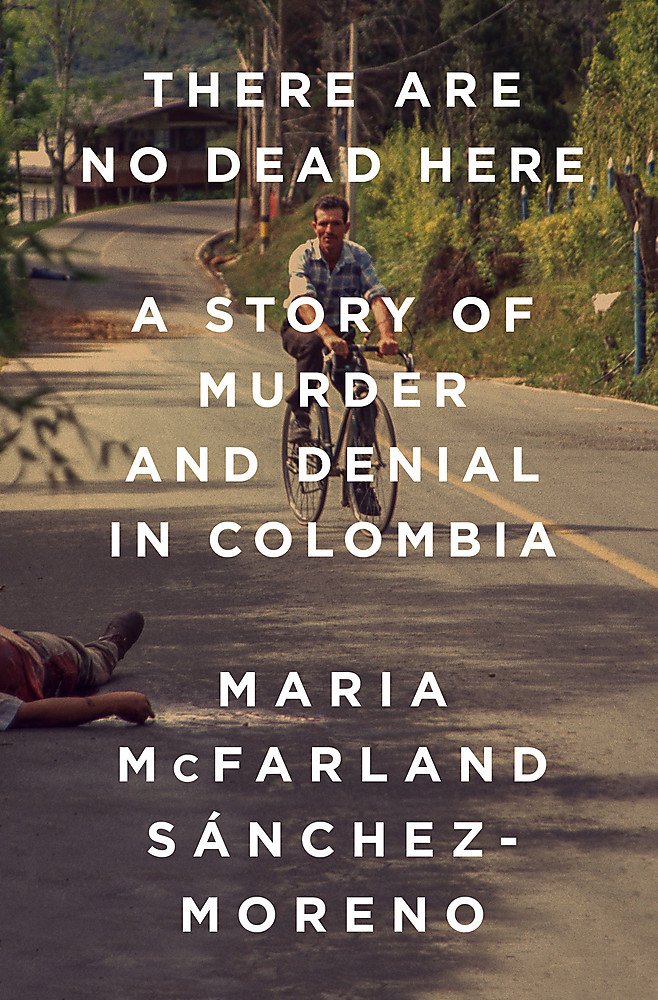
There are No Dead Here: A Story of Murder and Denial in Columbia
Maria McFarland Sánchez-Moreno, Executive Director of the Drug Policy Alliance
Colombia’s drug-fueled cycle of terror, corruption, and tragedy did not end with Pablo Escobar’s death in 1993. Just when Colombians were ready to move past the murderous legacy of the country’s cartels, a new, bloody chapter unfolded. In the late 1990s, right-wing paramilitary groups with close ties to the cocaine business carried out a violent expansion campaign, massacring, raping, and torturing thousands. Taking readers from the sweltering Medellín streets where criminal investigators were hunted by assassins, through the countryside where paramilitaries wiped out entire towns, and into the corridors of the presidential palace in Bogotá, There Are No Dead Here is an unforgettable portrait of the valiant men and women who dared to stand up to the tide of greed, rage, and bloodlust that threatened to engulf their country.
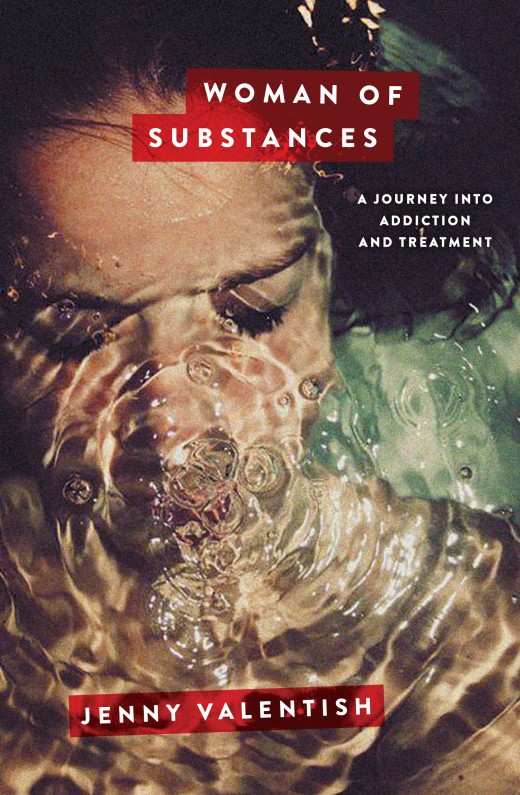
Women of Substances: A Journey Into Addiction and Treatment
Jenny Valentish
Journalist Jenny Valentish investigates the female experience of drugs and alcohol, using her own story to light the way. Her travels around Australia take her to treatment facilities and AA groups. Mining the expertise of leading researchers, she explores the early predictors of addiction, such as childhood trauma and temperament, and teenage impulsivity.Drawing on neuroscience, she explains why other self-destructive behaviours – such as eating disorders, compulsive buying and high-risk sex – are interchangeable with problematic substance use. Valentish follows the pathways that women, in particular, take into addiction – and out again. Woman of Substances is an insightful, rigorous and brutally honest read.
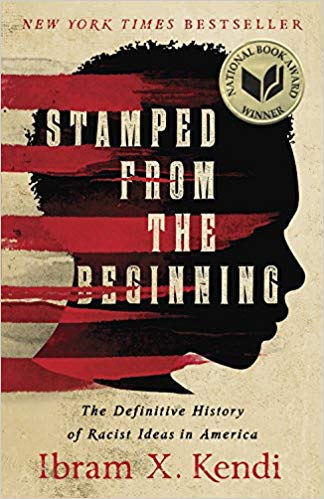
Stamped from the Beginning: The Definitive History of Racist Ideas in America
Ibram X. Kendi
Some Americans insist that we’re living in a post-racial society. But racist thought is not just alive and well in America–it is more sophisticated and more insidious than ever. And as award-winning historian Ibram X. Kendi argues, racist ideas have a long and lingering history, one in which nearly every great American thinker is complicit. In this deeply researched and fast-moving narrative, Kendi chronicles the entire story of anti-black racist ideas and their staggering power over the course of American history. He uses the life stories of five major American intellectuals to drive this history: Puritan minister Cotton Mather, Thomas Jefferson, abolitionist William Lloyd Garrison, W.E.B. Du Bois, and legendary activist Angela Davis. As Kendi shows, racist ideas did not arise from ignorance or hatred. They were created to justify and rationalize deeply entrenched discriminatory policies and the nation’s racial inequities. In shedding light on this history, Stamped from the Beginning offers us the tools we need to expose racist thinking. In the process, he gives us reason to hope.
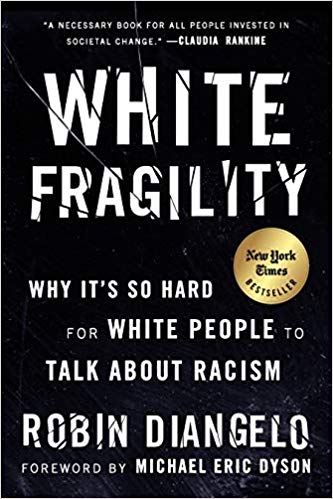
White Fragility: Why It's So Hard for White People to Talk About Racism
Robin DiAngelo
In this “vital, necessary, and beautiful book” (Michael Eric Dyson), antiracist educator Robin DiAngelo deftly illuminates the phenomenon of white fragility and “allows us to understand racism as a practice not restricted to ‘bad people’ (Claudia Rankine). Referring to the defensive moves that white people make when challenged racially, white fragility is characterized by emotions such as anger, fear, and guilt, and by behaviors including argumentation and silence. These behaviors, in turn, function to reinstate white racial equilibrium and prevent any meaningful cross-racial dialogue. In this in-depth exploration, DiAngelo examines how white fragility develops, how it protects racial inequality, and what we can do to engage more constructively.
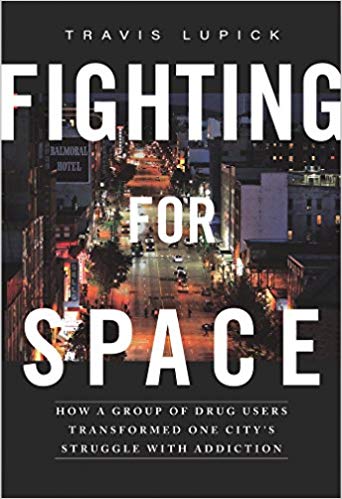
Fighting For Space: How a Group of Drug Users Transformed One City's Struggle with Addiction
Travis Lupick
North America is in the grips of a drug epidemic; with the introduction of fentanyl, the chances of a fatal overdose are greater than ever, prompting many to rethink the war on drugs. Public opinion has slowly begun to turn against prohibition, and policy-makers are finally beginning to look at addiction as a health issue as opposed to one for the criminal justice system. While deaths across the continent continue to climb, Fighting for Space explains the concept of harm reduction as a crucial component of a city’s response to the drug crisis. It tells the story of a grassroots group of addicts in Vancouver’s Downtown Eastside who waged a political street fight for two decades to transform how the city treats its most marginalized citizens. Over the past twenty-five years, this group of residents from Canada’s poorest neighborhood organized themselves in response to the growing number of overdose deaths and demanded that addicts be given the same rights as any other citizen; against all odds, they eventually won. But just as their battle came to an end, fentanyl arrived and opioid deaths across North America reached an all-time high. The “genocide” in Vancouver finally sparked government action. Twenty years later, as the same pattern plays out in other cities, there is much that advocates for reform can learn from Vancouver’s experience. Fighting for Space tells that story—including case studies in Ohio, Florida, New York, California, Massachusetts, and Washington state—with the same passionate fervor as the activists whose tireless work gave dignity to addicts and saved countless lives.


